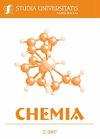Determination of biogenic amines by using amperometric biosensors based on grass pea amine oxidase and oat polyamine oxidase
IF 0.5
4区 化学
Q4 CHEMISTRY, MULTIDISCIPLINARY
引用次数: 0
Abstract
Grass pea amine oxidase (GPAO) and oat polyamine oxidase (OPAO) were immobilized along with horseradish peroxidase (HRP) and an Os-redox polymer (Os-RP) onto the surface of a graphite electrode by crosslinking with poly(ethylenglycol) diglycidyl ether. The resulted reagentless amperometric biosensors were inserted in a flow injection setup and used as electrochemical detectors for the biogenic amines (BA) detection. Both biosensors were operated at low applied potential (-50 mV vs. Ag/AgCl, KCl0.1M) where electrochemical interferences are minimal. The quantification of ten BA (tyramine, putrescine, cadaverine, histamine, cystamine, phenylethylamine, agmatine, tryptamine, spermine, and spermidine) either individual or in mixture (after a preliminary separation by using cation exchange chromatography) was reported. G/(Os-RP)-HRP-GPAO biosensor detected all ten BA, while G/(Os-RP)-HRP-OPAO biosensor detected only spermine and spermidine. Finally, a simple and low-cost method for free and acetylated polyamines determination in human urine samples, by using the highly selective G/(Os-RP)-HRP-OPAO biosensor, was proposed. (Less)基于草豆胺氧化酶和燕麦多胺氧化酶的安培生物传感器测定生物胺
将草豆胺氧化酶(GPAO)和燕麦多胺氧化酶(OPAO)与辣根过氧化物酶(HRP)和os -氧化还原聚合物(Os-RP)通过聚乙二醇二甘油酯交联固定在石墨电极表面。所得的无试剂安培生物传感器被插入到流动注射装置中,用作生物胺(BA)检测的电化学检测器。两种生物传感器都在低施加电位(-50 mV vs. Ag/AgCl, KCl0.1M)下工作,电化学干扰最小。本文报道了10种BA(酪胺、腐胺、尸胺、组胺、半胺、苯乙胺、胍胺、色胺、精胺和亚精胺)的定量测定(用阳离子交换色谱法初步分离后)。G/(Os-RP)-HRP-GPAO生物传感器检测到所有10种BA,而G/(Os-RP)-HRP-OPAO生物传感器仅检测精胺和亚精胺。最后,利用高选择性的G/(Os-RP)-HRP-OPAO生物传感器,提出了一种简单、低成本的测定人尿样品中游离和乙酰化多胺的方法。(少)
本文章由计算机程序翻译,如有差异,请以英文原文为准。
求助全文
约1分钟内获得全文
求助全文
来源期刊
CiteScore
0.80
自引率
33.30%
发文量
25
审稿时长
>12 weeks
期刊介绍:
Studia Universitatis Babes-Bolyai, Seria Chemia publishes fundamental studies in all areas of chemistry and chemical engineering.
Coverage includes experimental and theoretical reports on quantitative studies of structure and thermodynamics, kinetics, mechanisms of reactions, inorganic, organic, organometallic chemistry, biochemistry, computational chemistry, solid-state phenomena, surface chemistry, chemical technology and environmental chemistry.

 求助内容:
求助内容: 应助结果提醒方式:
应助结果提醒方式:


